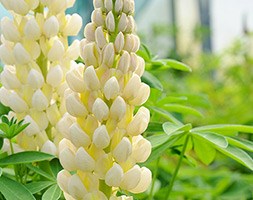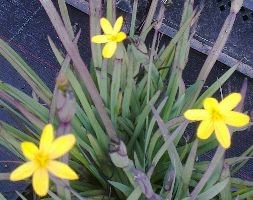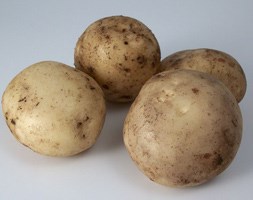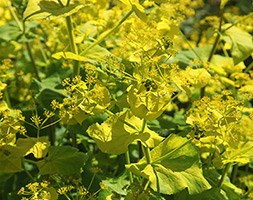New products at Crocus
by Sarah - May 18th, 2014.Filed under: Crocus, New Products.
Crocus has these new products today
Lupinus ‘Cashmere Cream’ (lupin) £8.99
Position: full sun or partial shade Soil: moderately fertile, well-drained, slightly acid, sandy soil Rate of growth: average Flowering period: June to July Other features: the seeds can cause severe discomfort if ingested Hardiness: fully hardy This robust and undemanding perennial produces magnificent spires of creamy white, pea-like flowers, which look beautiful with fresh greens, whites and blues. A star plant in our Chelsea Flower Show garden in 2014, where Luciano Giubbilei used it in drfits throughout the borders. Garden care: Stake with bamboo canes in spring before the flowers appear and deadhead the faded blooms to encourage a second flush of flowers.
Sisyrinchium californicum ‘Yellowstone’ (golden-eyed grass) £7.99
Position: full sun Soil: poor to moderately fertile, reliably moist but well-drained, neutral to slightly alkaline soil Rate of growth: average to fast-growing Flowering period: June to August Hardiness: frost hardy (may need winter protection) Cheerful, bright yellow, open star-like flowers above clumps of sword-shaped, grey-green leaves. This semi-evergreen, summer-flowering perennial is perfect for a sunny, rock or gravel garden. Best planted in well-drained, neutral to slightly alkaline soil, although short-lived it self-seeds freely. Garden care: Lift and divide large colonies in spring. It self-seeds freely, so if you do not want it to spread too quickly, cut off the spent flowers before they set seed.
potato ‘Casablanca’ (PBR) (seed potato for summer planting) £2.99
Position: sun-partial shade Soil: fertile, well drained Rate of growth: fast-growing Harvesting period: July Hardiness: protect tubers from frost Recently introduced, the shallow-eyed, white skinned tubers, which have a creamy white flesh, are fast becoming a favourite for both the exhibitor and the chef. Noted for its outstanding resistance to blackleg, this potato is suitable for general kitchen use. If planted in summer, you can begin to harvest your new potatoes in late autumn to Christmas. Garden care: There is no need to chit seed potatoes which are planted in summer, so just plant them straight out into trenches dug into a well-prepared bed about 30cm (12in) apart, or plant them into a potato grow-bag, making sure there is at least 20cm (8″) of compost beneath them. Add a general purpose fertiliser to the bottom of the trench or growbag and then cover the potatoes with a 20cm layer of soil or compost. Keep well watered, and as the plants get to around 20cm (8in) tall you need to bank up the soil around the plant, so the soil covers the bottom two thirds of the plant. Watering your plants well will help improve crop yield and discourage potato scab. It is important that the crop is protected from frosts and the crop should be ready to harvest in around 12 weeks.
Smyrnium perfoliatum (perfoliate alexanders) £2.49
Position: full sun to partial shade Soil: moderately fertile, moist but well-drained soil Rate of growth: average Flowering Period: May to June Hardiness: fully hardy An attractive addition to the woodland edge or mixed border, this upright biennial puts on a showy display that will liven up the garden in late spring and early summer. Its stout stems are clothed in leaves, rich green towards the base, but sulphur yellow nearer the top. It flowers in its second year, producing rounded clusters of tiny yellowish-green stars – similar in colour to the uppermost leaves. It makes a very handsome foil for rich plums and purples and also looks great when cut and added to a vase. Garden care: Sow the seed where it is to grow in autumn or late spring. Alternatively, sow in trays placed in a cold frame in spring and transplant when large enough to handle. The seeds do require a cold period before they germinate, so spring-sown seed in trays should be watered, then kept in the bottom of the fridge for 4 and 12 weeks. Germination can be slow, but they are worth waiting for, and once they start to grow they are easy and undemanding plants, which if happy, will self-seed and form generous swathes. Sow: September-November or March-May Flowering: May-June Approximate quantity: 10 seeds










